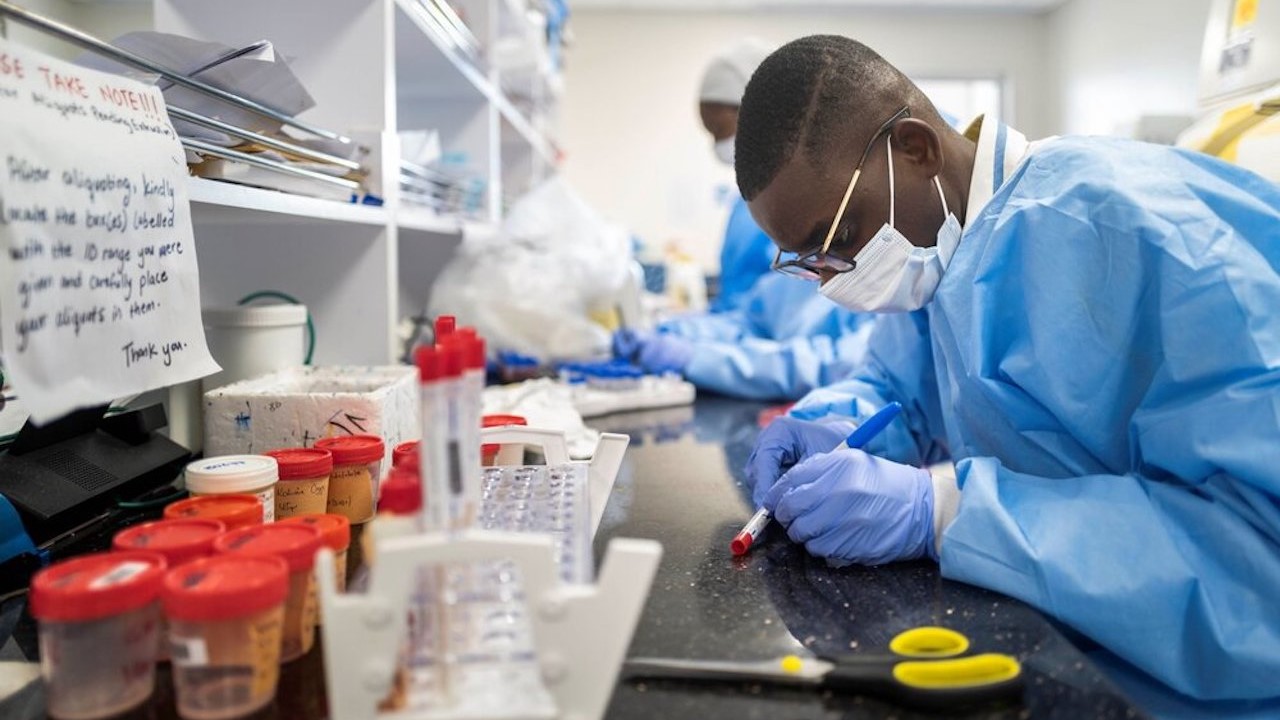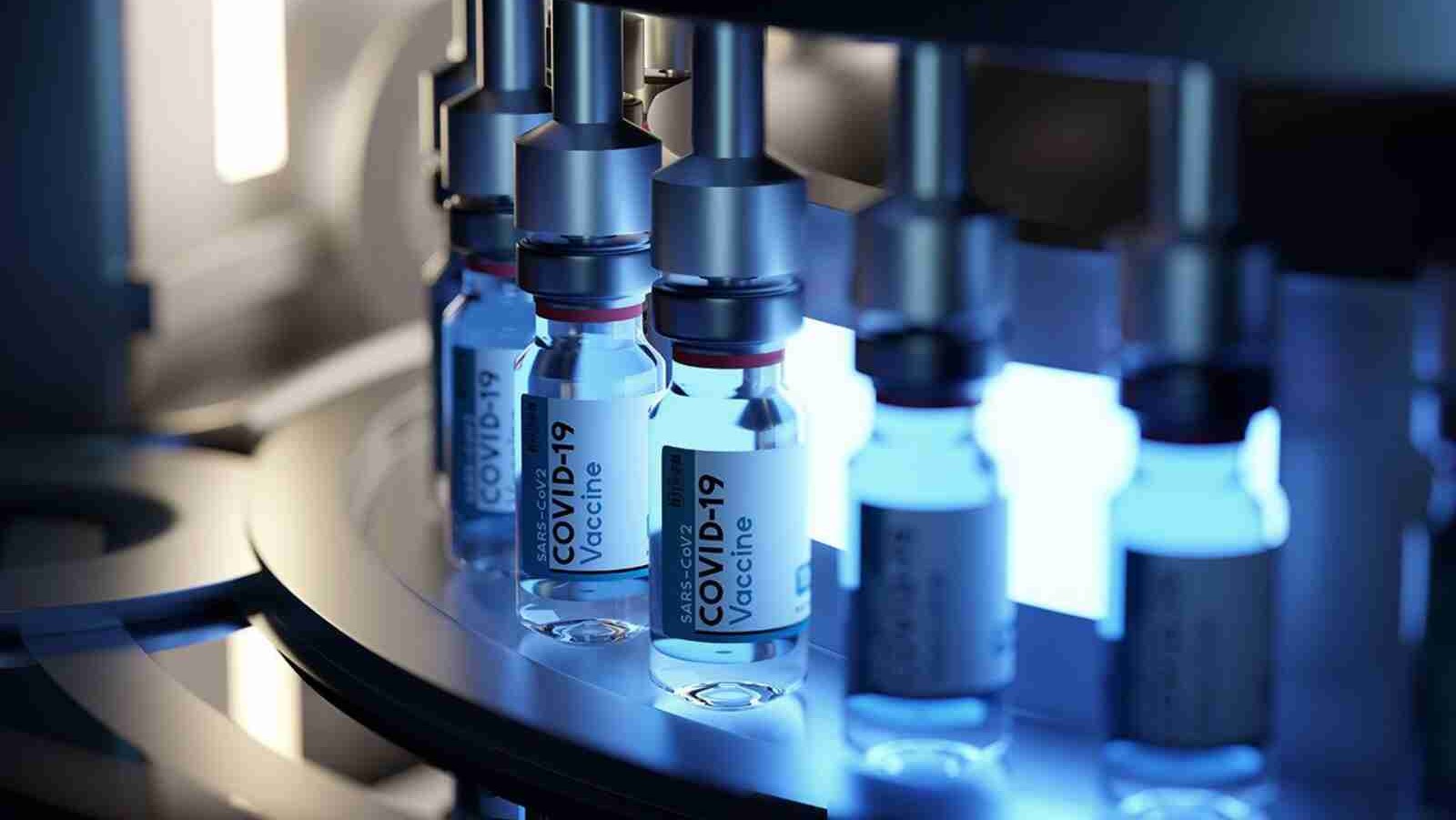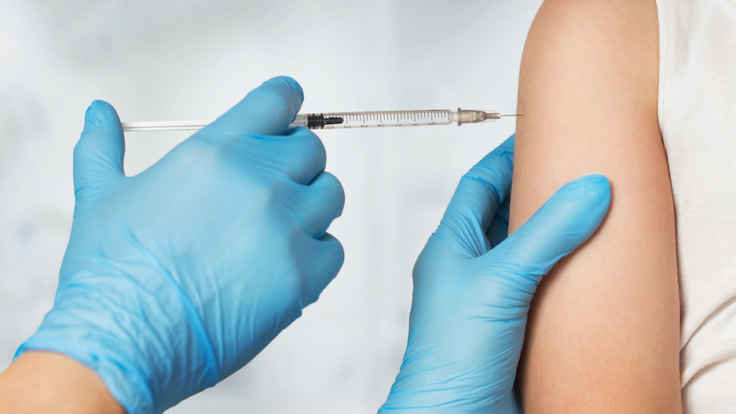Trade and technology
Unprecedented: How intellectual property rights helped the pandemic response
Published 30 November 2021
The call to remove IP on Covid-19 products could be counterproductive, slowing the innovation response to pandemics – current and future – and stemming the relevant technology and knowledge flows globally. The reason is simple: An absence of IP protection would make knowledge and technology sharing unduly risky.
Trade ministers who were due convene this week at the World Trade Organization (WTO) ministerial meetings face a challenge unique to the world’s current predicament: to consider the temporary removal of intellectual property (IP) protections on Covid-19 vaccines, therapeutics, and diagnostics. Such an action, say proponents, can help accelerate the response to the worst pandemic in modern history.
Since 2020, some countries have pushed for a waiver of WTO Members’ obligations to provide basic protections for intellectual property in their national laws under the Agreement on Trade-Related Aspects of Intellectual Property Rights, or TRIPS. However, recent research about innovation in response to Covid-19 identifies a supportive role of IP. Thus, a waiver could slow technology and knowledge-sharing, and stymie pandemic preparedness. The proposal on the table may be counterproductive to improving public health.
As lockdowns eased in Europe this summer, thanks in no small part to the roll-out of novel Covid-19 vaccines, I launched a research project with Professor Mark Schultz, who leads the Intellectual Property and Technology Law Program at the University of Akron in Ohio. The result, a new report called 'Unprecedented: The Rapid Innovation Response to Covid-19 and the Role of IP'[1], highlights the role of IP protection and examines the generation of new vaccines for Covid-19, which were produced in record time. We say “in record time” because before Covid-19, the fastest development time for a vaccine was for measles, mumps, and rubella (MMR), which took four years to move from the lab to market.
In contrast, Covid-19 vaccines were approved just nine months after the pandemic started. In a very short time, multiple vaccines became available for public consumption. While this milestone may not seem remarkable, it was an unprecedented achievement made possible by IP protection.
IP played a critical role in three stages of the pandemic innovation response. First, IP was key to the development of the background technologies that were used for Covid-19. Second, IP was central to enabling innovation in response to the pandemic itself. Third, IP allowed for the manufacturing and distribution of the required large numbers of vaccines and treatments by supporting the necessary technology transfer.
Our analysis, informed by a review of 300-plus reports and other resources, was confirmed during interviews with senior leaders of companies at the forefront of the Covid-19 response.
Four key findings of the report are reviewed briefly below.
IP supported knowledge and technology creation for developing vaccines
When the Covid-19 pandemic began, background technology and knowledge were available to help address the crisis. Innovators drew on existing platforms for vaccines, monoclonal antibodies, manufacturing technologies, and related expertise, some of which included contributions from public sector researchers. These provided the foundation for a rapid response. As one industry representative remarked:
The core technologies came together at the right time and were available for the Covid response because we had a strong and robust IP system over the years. You could argue that those technologies would never have been developed without IP.
Thanks to sizeable past investments in research and development (R&D) that were managed using IP rights, innovators were able to leverage these pre-existing technologies to develop new vaccines and treatments. (They also tested existing ones for relevance to Covid-19.) Innovators in the biopharmaceutical sector rely on IP rights, such as patents and trade secrets, to manage their investments in developing new products and bringing them to patients.
IP also made possible the diversity of promising technologies that were available. IP stimulates efforts to develop different ways to solve the same problem, designing around others’ IP rights. The result: a myriad of compounds and platforms that could be used to rapidly develop Covid-19 vaccines and treatments.
IP enabled collaboration, which accelerated innovation
As Covid-19 spread, innovators from across the biopharma ecosystem jumped in to work together. To move quickly, collaboration was critical. Sharing knowledge across organizations gave rise to new, effective tools to address the pandemic. Within nine months, the first vaccines were being approved.
Some argue that IP rights inhibit the sharing of information. In the case of Covid-19, we found that IP rights provided a safe environment for innovators to share proprietary technology and knowledge with partners, including competitors. They did so with the confidence that their IP assets, whether patents or trade secrets, were protected under IP and contract laws. This reduced the risk of losing control over their IP and related competitive advantages.
Stable IP frameworks allowed partnerships to come together immediately – in some cases even before the details of the working relationship had been worked out. In addition to IP protection, trust built over time gave innovators confidence that what they shared with their peers would not be misappropriated.
Bringing a treatment to market requires a division of labor between research institutions, startups, large companies, contract manufacturers, suppliers, and others. A culture of partnership and innovation thrives with effective IP rights. Industry insiders shared these anecdotes:
Pfizer and BioNTech had already been working together to develop a vaccine using the mRNA platform. This is BioNTech’s core technology and the result of all the investments they have made over the years. IP protection gave them the assurance that they could share it without losing all their investments from over the years.
No one party can do everything. No one entity has all the technology to bring to bear to solve a problem like Covid-19. It has taken a tremendous amount of collaboration. And IP has really facilitated collaboration. It allowed parties to share information freely, knowing there are frameworks to protect that information.
IP enabled the investments required for advancing Covid-19 technologies
Developing biopharmaceutical products is costly and risky at every stage, from lab to market. At every step towards delivering Covid-19 vaccines and technologies to patients, sizeable investments were needed. This was the case for new offerings and prepositioned products like remdesivir, an anti-viral treatment that was rapidly recruited for the fight against Covid-19. Companies drew on earnings from past innovation successes to finance their Covid-19 R&D and commercialization activities.
In addition, innovators moved resources away from other projects as they prioritized the fight against Covid-19. It was clear from our interviews that the leadership of innovative biopharma companies considered it necessary to step forward to help. At the same time, redirecting manpower and investments to Covid-19 projects was costly and risky. IP helped them to manage such risk.
The investments were extensive. Innovators developed new solutions and tested them. They secured regulatory approval while, in parallel, learning how to manufacture at scale and investing to upgrade facilities. To meet the enormous need, they moved quickly to identify and vet manufacturing partners, to establish new global value chains and distribution networks. Lastly, innovators invested in continuous monitoring and improvement of the Covid-19 solutions themselves.

For experts with decades of industry experience, the technology transfer that took place during the Covid-19 response unfolded at a speed previously unseen.
Technology transfer happened rapidly and on a broad scale
For experts with decades of industry experience, the technology transfer that took place during the Covid-19 response unfolded at a speed previously unseen. The technology transfer taking place at different stages of development and commercialization was supported by IP protection.
Before the pandemic, mRNA vaccines had never been made at commercial scale. However, by working together and sharing their know-how and technology, Pfizer, BioNTech, and Novartis were able to develop a novel manufacturing process for the Pfizer-BioNTech vaccine in approximately four months.
Then, when tasked to manufacture billions of doses, innovators set up geographically distributed networks for contract manufacturing and distribution. Technology transfer was integral in quickly bringing in new partners to scale manufacturing. Again, IP enabled the necessary investments, and technology and knowledge sharing. As of August 2021, there were 45 publicly reported contract manufacturing partnerships around the world for the Pfizer, J&J, Moderna, and AZ vaccines. One company leader remarked that,
Ultimately, we are sharing the IP in order to show our partners how to safely and effectively make the product. Onboarding manufacturers involves significant technology transfer, and you need to be able to share and speak freely.
To be sure, the manufacturing processes presented significant logistical and management challenges, not least because of the scale and urgency of the crisis. Production of any health product must be carried out efficiently, economically, with high precision, and with appropriate attention to safety and quality. Making billions of vaccine doses is a significant industrial undertaking. Technology transfer helped to ensure that quality products were made and distributed safely.
We should not underestimate the complexity of Covid-19 vaccines, as they require a range of materials sourced from many places. One interview revealed that manufacturing Pfizer’s mRNA vaccine involved 86 different suppliers, 280 materials in total, including 10-15 unique raw materials, and 46 steps to review a batch of vaccine before release. The need to store vaccines in ultra-cold freezers made distribution more challenging and gave rise to additional innovations such as labels that can stick to frozen vials.
Insights for policymakers
By applying lessons learned, policymakers can support the ongoing Covid-19 response and enhance future pandemic preparedness. Collaboration, along with technology and knowledge sharing, provided a foundation for rapid innovation in response to the crisis. IP enabled such sharing and supported a hands-off approach among actors from the public and private sector.
At every stage of development of Covid-19 vaccines and other solutions, significant investments were required. IP protection helped to enable such investments, whether in relation to product innovation, regulatory approval, scaling production, distribution, or other activities.
Some IP assets relevant to the Covid-19 response had been licensed by public sector research institutes to the private sector, which invested further to transform the research into products, then to secure approval and make them available to patients. The example of the mRNA platform underlines the need for policy frameworks that allow public-private collaboration and IP management so that early-stage research can be further developed.
The call to remove IP on Covid-19 products could be counterproductive, slowing the innovation response to pandemics – current and future – and stemming the relevant technology and knowledge flows globally. The reason is simple: An absence of IP protection would make knowledge and technology sharing unduly risky. Innovators would subsequently work less with others and keep the highest value-added technology, processes, and expertise strictly in-house. To do otherwise would be risking the business entirely.
In the case of Covid-19, innovators could not have made enough doses using only their own manufacturing facilities. Therefore, partners worked together to build new global manufacturing networks. Lifting IP protection would have made it almost impossible to go this route, given that all the manufacturing networks were built on technology and IP-sharing.
We must remember that a health problem simultaneously affecting all members of society across the world is a highly unusual challenge. One interviewee remarked that the industry’s unprecedented response to this situation may be remembered as one of history’s greatest moments of innovation. IP may have faced some bad press related to the Covid-19 response, but this may well be a transformative moment in its history. IP protection and the arrangements for IP-sharing that were quickly put in place by innovators were central to the global response to the crisis. Collaboration enabled by IP is essential for successful pandemic responses in the future.
[1] - a new report called Unprecedented: The Rapid Innovation Response to Covid-19 and the Role of IP - https://www.unpackingip.org/
© The Hinrich Foundation. See our website Terms and conditions for our copyright and reprint policy. All statements of fact and the views, conclusions and recommendations expressed in this publication are the sole responsibility of the author(s).





